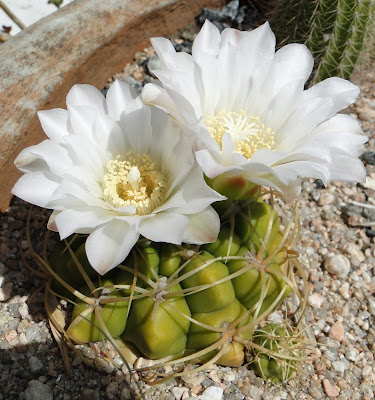Estas plantas me fascinan, y es el segundo año que florece el Epi fucxia y el primero para el amarillo. No se si tienen un nombre especifico, creo que cuando los compré me dijo el vendedor que eran híbridos.
These plants fascinate me, and is the second year fucxia Epi flourishes and the first for the yellow. Not if they have a specific name, I think when I bought them the seller told me that they were hybrids.
Lo que si me hizo notar este mismo señor, que a diferencia de las asclepiadáceas, que de sus tallos nuevos salen las flores, en este caso de las hojas antiguas florece.
Es más aquellas hojas que corté para compartir un esqueje, es de donde mas pimpollos han salido.
What if I noted this same man, who unlike the milkweed, which stems out new flowers, in this case the old leaves flowers.
Moreover those leaves that I cut to share a cutting, is where most seedlings have emerged.
Una vez que terminen su floración tengo pensado realizar una poda general para la próxima temporada tener mas flores.
Once I have finished flowering plans a general pruning for next season have more flowers
NOTA( del 02/12/2010): Gracias al comentario de Patricia, ahora mis Epis tienen nombre:
El de Flor amarilla Epiphyllum crenatum y el de Flor fucxia Epiphyllum pegasus. Desde ya muchas gracias a Patri!!
NOTE (from 12/02/2010): Thanks to Patricia's comment, now my Epis have names:
The Yellow Flower Epiphyllum Flower crenatum and Epiphyllum fucxia pegasus. From already thank you very much to Patri




































